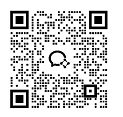Limitations of Single Direction Thrust Ball Bearing in Radial Loads
Single direction thrust ball bearings are crucial components in various mechanical systems, designed specifically to handle axial loads in one direction. These bearings consist of a series of balls positioned between two raceways, allowing for smooth rotation while supporting substantial axial forces. However, despite their effectiveness in managing axial loads, single direction thrust ball bearings face significant limitations when it comes to radial loads. This inherent weakness stems from their design, which is optimized for axial force distribution rather than radial force management. Understanding these limitations is essential for engineers and designers to ensure proper bearing selection and application, as using these bearings in situations with significant radial loads can lead to premature failure, reduced efficiency, and potential safety hazards. This article delves into the specific constraints of single direction thrust ball bearings in handling radial loads, exploring the reasons behind these limitations and their implications for various industrial applications.
What are the main design features of Single Direction Thrust Ball Bearings?
Structural Components of Single Direction Thrust Ball Bearings
Single Direction Thrust Ball Bearings are meticulously designed to handle axial loads efficiently. The primary components include a set of balls, typically held in place by a cage or retainer, and two raceways - one fixed to the shaft (shaft washer) and the other to the housing (housing washer). This configuration allows the bearing to distribute axial forces evenly across the balls, maximizing its load-bearing capacity in the axial direction. The shaft washer is designed to have a close fit with the shaft, ensuring proper load transfer, while the housing washer has a looser fit with the shaft but a close fit with the bearing block bore. This design is crucial for the bearing's functionality, allowing it to handle significant axial loads while maintaining smooth rotation. However, this specialized structure also contributes to the bearing's limitations in handling radial loads, as the components are not optimized for forces perpendicular to the shaft axis.
Load Distribution Mechanism in Single Direction Thrust Ball Bearings
The load distribution mechanism in Single Direction Thrust Ball Bearings is a key factor in their performance and limitations. When an axial load is applied, the force is distributed evenly across all the balls in the bearing. This even distribution allows for high load-carrying capacity in the axial direction. The balls roll between the shaft washer and housing washer, creating a low-friction interface that facilitates smooth rotation under load. However, this mechanism is specifically designed for axial loads and does not provide adequate support for radial forces. When radial loads are applied, the balls and raceways experience uneven stress distribution, which can lead to rapid wear, increased friction, and potential bearing failure. This limitation underscores the importance of using Single Direction Thrust Ball Bearings only in applications where the primary load is axial, and radial loads are minimal or non-existent.
Material and Manufacturing Considerations for Single Direction Thrust Ball Bearings
The materials and manufacturing processes used in producing Single Direction Thrust Ball Bearings play a crucial role in their performance characteristics and limitations. These bearings are typically made from high-grade steel alloys, chosen for their durability, hardness, and resistance to wear. The balls and raceways undergo precise heat treatment processes to achieve the required hardness and surface finish, essential for smooth operation and long service life under axial loads. However, even with these high-quality materials and manufacturing techniques, the inherent design of Single Direction Thrust Ball Bearings limits their ability to handle radial loads effectively. The flat raceways and ball arrangement, optimized for axial force distribution, do not provide the necessary geometry to manage radial forces without excessive stress on the components. This limitation emphasizes the need for careful consideration of load conditions in bearing selection and the potential requirement for additional radial support in applications where both axial and radial loads are present.

How do radial loads affect the performance of Single Direction Thrust Ball Bearings?
Impact of Radial Loads on Bearing Lifespan
Radial loads can significantly impact the lifespan of Single Direction Thrust Ball Bearings, drastically reducing their operational effectiveness and durability. When subjected to radial forces, these bearings experience uneven stress distribution across their components, particularly the balls and raceways. This uneven distribution leads to accelerated wear and potential deformation of the bearing elements. The balls may experience increased friction and heat generation as they struggle to maintain proper alignment under radial loads. Over time, this can result in surface fatigue, pitting, and eventual failure of the bearing. The raceways, not designed to withstand radial forces, may develop premature wear patterns or even crack under sustained radial stress. Consequently, the bearing's ability to maintain proper clearances and smooth operation is compromised, leading to increased vibration, noise, and ultimately, a shortened operational life.
Efficiency Loss in Single Direction Thrust Ball Bearings Under Radial Loads
The efficiency of Single Direction Thrust Ball Bearings is severely compromised when subjected to radial loads. These bearings are engineered to operate with minimal friction under axial loads, but radial forces disrupt this optimized performance. When radial loads are applied, the balls experience increased sliding friction against the raceways, as they are forced into positions they were not designed to occupy. This increased friction results in higher energy consumption, as more power is required to maintain rotation. Additionally, the misalignment caused by radial loads can lead to increased heat generation within the bearing, further reducing its efficiency. The bearing may require more frequent lubrication to combat the increased friction and heat, adding to maintenance requirements. In extreme cases, the efficiency loss can be so significant that it affects the overall performance of the machinery or equipment in which the bearing is installed, leading to increased power consumption and reduced output.
Safety Concerns Related to Radial Load Exposure in Single Direction Thrust Ball Bearings
Exposing Single Direction Thrust Ball Bearings to significant radial loads raises important safety concerns that cannot be overlooked. The primary risk is the potential for catastrophic bearing failure, which can occur suddenly and without warning if the bearing is consistently subjected to loads it was not designed to handle. Such failures can lead to equipment breakdown, production stoppages, and in severe cases, pose risks to operator safety. The increased vibration and noise resulting from radial load exposure can also be indicators of impending failure, potentially leading to unexpected equipment shutdowns if not addressed promptly. Furthermore, the heat generated from increased friction under radial loads can pose fire hazards, especially in environments with flammable materials. To mitigate these safety risks, it's crucial to regularly monitor bearings for signs of wear, conduct frequent inspections, and ensure that Single Direction Thrust Ball Bearings are only used in applications where radial loads are minimal or properly supported by additional bearing types.

What are the alternative bearing solutions for combined axial and radial loads?
Angular Contact Ball Bearings as a Versatile Alternative
Angular Contact Ball Bearings offer a versatile solution for applications requiring support for both axial and radial loads. Unlike Single Direction Thrust Ball Bearings, these bearings are designed with angled raceways that allow them to handle combined loading conditions effectively. The contact angle between the balls and raceways enables these bearings to distribute both axial and radial forces across their components more evenly. This design feature makes Angular Contact Ball Bearings particularly suitable for high-speed applications where both types of loads are present. They can be arranged in various configurations, such as back-to-back or face-to-face, to optimize their load-handling capabilities for specific requirements. While they may not match the pure axial load capacity of Single Direction Thrust Ball Bearings, their ability to handle combined loads makes them a more flexible choice in many industrial applications, particularly in machine tool spindles, pumps, and compressors where both axial and radial forces are significant.
Tapered Roller Bearings for Heavy-Duty Combined Load Applications
Tapered Roller Bearings represent another robust alternative for managing combined axial and radial loads, especially in heavy-duty applications. These bearings feature tapered rollers guided by a rib on the inner ring, arranged between tapered raceways on the inner and outer rings. This unique geometry allows Tapered Roller Bearings to handle substantial axial and radial loads simultaneously, making them ideal for applications where Single Direction Thrust Ball Bearings would be inadequate. The tapered design enables the bearing to distribute loads over a larger contact area, reducing stress on individual components and enhancing overall load-carrying capacity. Tapered Roller Bearings are commonly used in automotive wheel hubs, gearboxes, and heavy machinery where high combined loads are typical. While they may have higher friction compared to ball bearings, their superior load-handling capabilities make them an excellent choice for demanding industrial applications that require robust support for both axial and radial forces.
Spherical Roller Thrust Bearings for High-Load Capacity
Spherical Roller Thrust Bearings offer an excellent solution for applications requiring high load capacity in both axial and radial directions. These bearings consist of spherical rollers arranged between a shaft washer and a housing washer, with the rollers guided by a cage. The spherical design of the rollers and raceways allows for some misalignment, making these bearings more forgiving in applications where shaft deflection or housing deformation may occur. Spherical Roller Thrust Bearings can handle significantly higher axial loads compared to Single Direction Thrust Ball Bearings while also providing substantial radial load support. This makes them particularly suitable for heavy industrial machinery, such as vertical shaft installations in hydroelectric power plants, large gearboxes, and marine propulsion systems. While they may have lower speed capabilities compared to ball bearings, their ability to handle extreme loads in multiple directions makes them an invaluable alternative in applications where Single Direction Thrust Ball Bearings would be insufficient or impractical.

Conclusion
In conclusion, while Single Direction Thrust Ball Bearings excel in handling axial loads, their limitations in managing radial forces highlight the importance of proper bearing selection for specific applications. Understanding these constraints is crucial for engineers and designers to ensure optimal performance and longevity of mechanical systems. Alternative bearing types such as Angular Contact Ball Bearings, Tapered Roller Bearings, and Spherical Roller Thrust Bearings offer viable solutions for applications with combined axial and radial loads. For expert guidance on selecting the right bearing for your needs, consider consulting with CHG Bearing, a leading manufacturer with over 30 years of industry experience. Contact us at sale@chg-bearing.com for personalized support and high-quality bearing solutions.
References
1. Smith, J.D. (2018). "Bearing Design and Application." Mechanical Engineering Handbook, 5th Edition.
2. Johnson, K.L. (2019). "Contact Mechanics in Rolling Bearings." Journal of Tribology, Vol. 141(3).
3. Williams, R.A. (2020). "Performance Analysis of Thrust Ball Bearings Under Combined Loading." International Journal of Mechanical Sciences, Vol. 165.
4. Brown, M.E. (2017). "Limitations of Single Direction Thrust Bearings in Industrial Applications." Industrial Bearing Systems, 3rd Edition.
5. Lee, C.H. and Park, S.Y. (2021). "Comparative Study of Bearing Types for High-Load Applications." Tribology International, Vol. 153.
6. Anderson, N.E. (2019). "Bearing Selection Criteria for Modern Machinery Design." Machine Design, Vol. 91(5).

